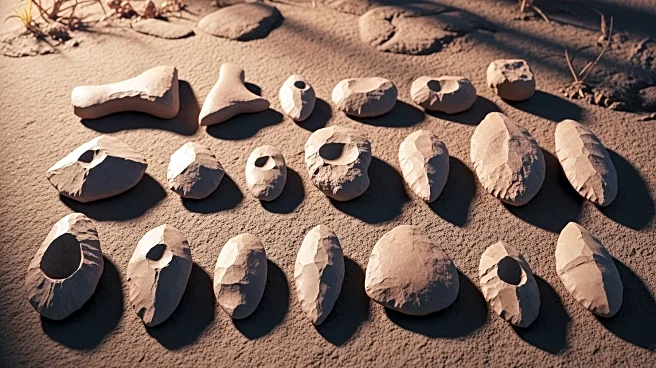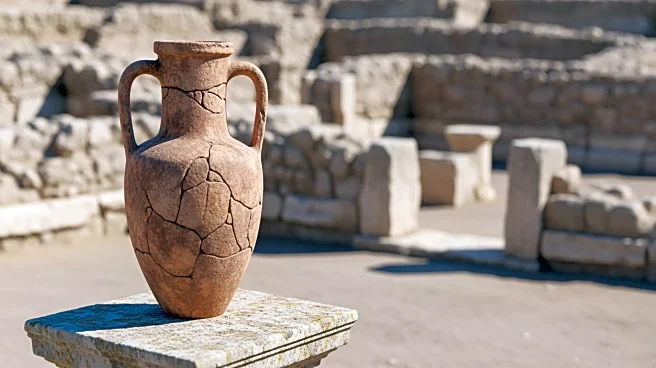What's Happening?
A recent study published in Nature Communications has revealed significant findings at the Namorotukunan Site in Kenya's Turkana Basin. Researchers have uncovered evidence of Oldowan stone toolmaking dating
back between 2.75 and 2.44 million years ago. These tools, crafted by early hominins, demonstrate a long-standing technological tradition that persisted through dramatic environmental changes such as wildfires, droughts, and shifting landscapes. The study, led by David R. Braun from George Washington University, suggests that tool use was a generalized adaptation among primate ancestors, allowing them to thrive despite climatic instability. The research involved an international team and utilized various scientific methods to reconstruct the environmental timeline, linking toolmaking to major climatic transformations.
Why It's Important?
The discovery of these ancient tools provides crucial insights into the technological capabilities and adaptability of early humans. The ability to craft versatile tools likely played a significant role in expanding dietary options, including meat consumption, which could have been an evolutionary advantage during periods of environmental stress. This research underscores the resilience and ingenuity of early hominins, offering a deeper understanding of human evolution and the development of technology as a means to cope with change. The findings also contribute to the broader narrative of human history, highlighting the importance of technological innovation in survival and adaptation.
What's Next?
The study opens avenues for further research into the origins and evolution of toolmaking among early humans. Future investigations may focus on uncovering more sites with similar evidence to better understand the spread and development of Oldowan technology. Additionally, researchers may explore the implications of these findings on current theories of human evolution, potentially revising timelines and understanding of early human behavior. Collaboration among international teams will continue to be crucial in piecing together the complex history of human technological advancement.
Beyond the Headlines
The ethical and cultural dimensions of this research are significant, as it involves collaboration with local communities and institutions in Kenya. The study highlights the importance of respecting and integrating indigenous knowledge and perspectives in archaeological research. Furthermore, the findings may influence educational and public policy by emphasizing the role of technology in human history, potentially inspiring new approaches to STEM education and cultural heritage preservation.












